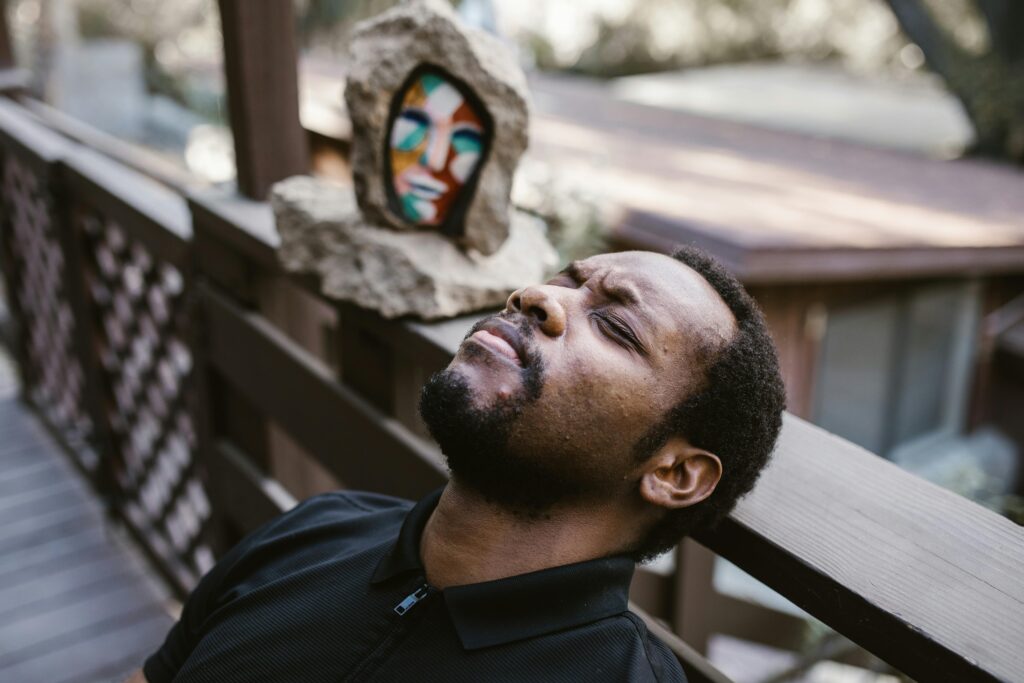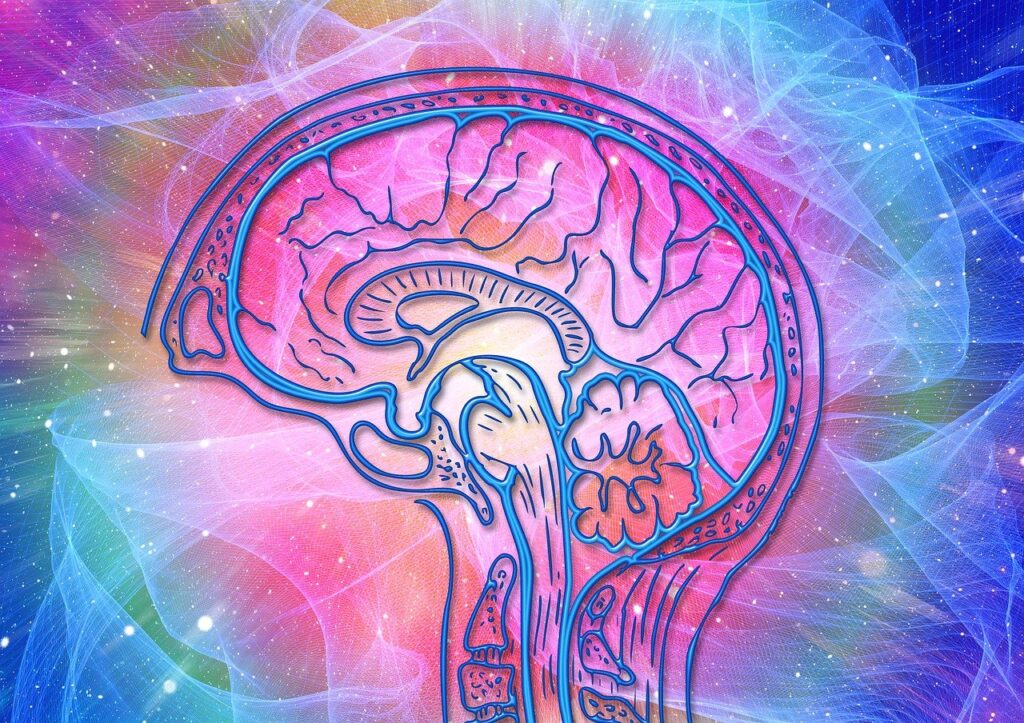Unmasking Anxiety: Exploring the Hidden Signs and Symptoms
Anxiety is a pervasive and intricate aspect of the human experience, transcending cultural, geographical, and socioeconomic boundaries. While commonly associated with feelings of nervousness or worry, anxiety encompasses a spectrum of emotions, thoughts, and behaviors that can manifest in unexpected and often insidious ways.
At its core, anxiety is more than just a fleeting sense of unease; it’s a complex interplay of biological, psychological, and environmental factors that can profoundly impact one’s quality of life. From the intricate neurochemistry of the brain to the subtle nuances of cognitive and emotional processing, anxiety permeates every aspect of our being, influencing our thoughts, feelings, and actions in profound and often subtle ways.
Yet, despite its prevalence and impact, anxiety remains shrouded in misconceptions and misunderstanding. The popular image of anxiety as mere jittery nerves or sweaty palms fails to capture the full breadth and depth of this multifaceted condition. In reality, anxiety can manifest in myriad forms, ranging from the palpable dread of a panic attack to the quiet, persistent hum of generalized anxiety disorder.
Moreover, anxiety is a master of disguise, often masquerading as other, more socially acceptable emotions or behaviors. The high-achieving executive who thrives under pressure may secretly grapple with paralyzing self-doubt and perfectionism. The gregarious social butterfly may conceal a constant undercurrent of worry and self-consciousness beneath a veneer of confidence and charm. These hidden struggles, while less visible to the outside world, can be just as debilitating and disruptive to one’s well-being.
In this comprehensive guide, we embark on a journey to unmask the hidden signs and symptoms of anxiety, shining a light on the lesser-known aspects of this complex mental health condition. From the intricate neurobiology of anxiety to the nuanced interplay of cultural and societal factors, we’ll explore the multifaceted nature of anxiety and its far-reaching impact on individuals, families, and communities worldwide.
Join us as we peel back the layers of misconception and stigma surrounding anxiety, revealing the true depth and complexity of this often misunderstood condition. Together, let’s embark on a journey of discovery and understanding, empowering ourselves and others to navigate the labyrinth of anxiety with compassion, resilience, and hope.
The Anatomy of Anxiety: A Psychological Perspective
Anxiety, though commonly experienced, is a complex phenomenon that transcends mere feelings of nervousness or worry. To truly understand anxiety, we must delve into the intricate workings of the human mind and the underlying psychological mechanisms that give rise to this pervasive condition.
At its core, anxiety is deeply rooted in the evolutionary mechanisms designed to keep us safe from harm. The brain’s fear response system, centered in the amygdala and interconnected regions of the limbic system, serves as a primal alarm system, triggering physiological and behavioral responses in the face of perceived threats. When faced with danger, the amygdala sends signals to activate the sympathetic nervous system, initiating the well-known “fight or flight” response characterized by increased heart rate, rapid breathing, and heightened alertness.
However, in individuals with anxiety disorders, this fear response system becomes dysregulated, leading to chronic and excessive worry in response to perceived or imagined threats. Neuroimaging studies have revealed structural and functional abnormalities in key brain regions implicated in anxiety, including the amygdala, prefrontal cortex, and insula. These alterations in brain structure and function contribute to heightened reactivity to stressors and difficulties in regulating emotions, perpetuating the cycle of anxiety.
From a cognitive perspective, anxiety is characterized by a tendency to perceive and interpret ambiguous or neutral stimuli as threatening. Cognitive biases, such as selective attention to threat-related cues and catastrophic thinking patterns, amplify feelings of fear and uncertainty, fueling the cycle of anxiety. Moreover, maladaptive beliefs and schemas about oneself, the world, and the future, often stemming from early life experiences or social conditioning, can further exacerbate anxiety symptoms and maintain the disorder over time.
Psychological theories of anxiety also highlight the role of learning processes, such as classical and operant conditioning, in the development and maintenance of anxiety disorders. Traumatic or aversive experiences, whether real or perceived, can become associated with specific stimuli or situations, leading to conditioned fear responses and avoidance behaviors. Over time, these learned associations can become deeply ingrained, contributing to the persistence of anxiety symptoms even in the absence of actual threat.
In summary, anxiety is a multifaceted phenomenon that arises from the intricate interplay of biological, cognitive, and learning processes. By understanding the psychological mechanisms underlying anxiety, we gain insight into its etiology and maintenance, paving the way for more effective interventions and treatments tailored to the individual needs of those struggling with anxiety disorders.
Beyond the Obvious: Lesser-Known Symptoms of Anxiety
Anxiety is a complex and multifaceted condition that extends far beyond the stereotypical image of jittery nerves and sweaty palms. While these overt symptoms are certainly common manifestations of anxiety, there exists a vast array of subtle signs and symptoms that often go unnoticed or unrecognized. In this chapter, we’ll explore these lesser-known manifestations of anxiety, shedding light on the hidden aspects of this pervasive mental health condition.
One of the lesser-known symptoms of anxiety is cognitive distortions. These distortions involve habitual patterns of thinking characterized by irrationality and negativity. Common cognitive distortions seen in anxiety disorders include catastrophizing (expecting the worst-case scenario), black-and-white thinking (seeing situations as all good or all bad), and overgeneralization (drawing broad conclusions from isolated incidents). These distortions can contribute to heightened levels of worry and rumination, exacerbating feelings of anxiety and distress.
Additionally, perfectionism is a frequent companion of anxiety, yet its connection to the disorder is often overlooked. Individuals with anxiety may set unrealistically high standards for themselves and engage in relentless self-criticism when they fail to meet these standards. Perfectionism can fuel feelings of inadequacy and self-doubt, leading to chronic stress and anxiety.
Somatic complaints, or physical symptoms with no apparent medical cause, are another hallmark of anxiety that often flies under the radar. These symptoms can include headaches, muscle tension, gastrointestinal disturbances, and even chest pain or heart palpitations. While these physical manifestations may seem unrelated to anxiety at first glance, they are often the body’s physiological response to prolonged stress and tension.
Hypervigilance, or heightened awareness of potential threats in the environment, is a common feature of anxiety disorders that can be particularly insidious. Individuals with anxiety may constantly scan their surroundings for signs of danger, leading to a perpetual state of alertness and arousal. This chronic state of hypervigilance can be exhausting and can contribute to feelings of fatigue and burnout.
Finally, avoidance behaviors are a key feature of many anxiety disorders but are often overlooked or misunderstood. Individuals with anxiety may go to great lengths to avoid situations or stimuli that trigger feelings of fear or discomfort. While avoidance may provide temporary relief from anxiety symptoms, it ultimately perpetuates the cycle of anxiety by reinforcing the belief that the feared stimuli are inherently dangerous.
In summary, anxiety is a complex and multifaceted condition characterized by a wide range of symptoms, both overt and subtle. By recognizing these lesser-known manifestations of anxiety, we gain a deeper understanding of the disorder and its impact on individuals’ lives. It is essential to consider these hidden symptoms when assessing and treating anxiety, as they can significantly contribute to the overall burden of the disorder and may require targeted interventions to address effectively.
High-Functioning Anxiety: The Mask of Success
Anxiety, often perceived as a hindrance, can also present itself in unexpected ways, including what is known as high-functioning anxiety. This phenomenon refers to individuals who outwardly appear successful, competent, and in control, yet internally grapple with persistent anxiety and perfectionism. In this chapter, we’ll explore the paradox of high-functioning anxiety, shedding light on its hidden challenges and the impact it can have on individuals’ lives.
High-functioning anxiety is characterized by a relentless drive for achievement and perfection, coupled with an intense fear of failure or criticism. These individuals may excel in their professional endeavors, maintaining a busy schedule filled with work, social commitments, and extracurricular activities. They may appear confident and composed to others, masking their inner turmoil with a veneer of competence and capability.
Despite their outward success, individuals with high-functioning anxiety often experience profound internal pressure and self-doubt. They may struggle with impossibly high standards for themselves, fearing that any mistake or imperfection will result in failure or rejection. This constant striving for perfection can lead to chronic stress, burnout, and feelings of inadequacy, despite external validation and praise.
One of the hallmarks of high-functioning anxiety is the tendency to overcommit and overachieve in an attempt to manage underlying feelings of anxiety and insecurity. These individuals may fill their schedules with an endless array of tasks and responsibilities, seeking validation and validation through their accomplishments. However, this relentless pursuit of success can come at a cost, leading to exhaustion, overwhelm, and a diminished sense of well-being.
Another characteristic of high-functioning anxiety is the tendency to downplay or dismiss one’s own struggles, fearing that admitting vulnerability will be perceived as weakness. As a result, individuals with high-functioning anxiety may suffer in silence, reluctant to seek help or support for fear of being judged or misunderstood. This reluctance to acknowledge and address their own mental health needs can perpetuate feelings of isolation and exacerbate their symptoms over time.
Despite the challenges it presents, high-functioning anxiety is not without its strengths. These individuals often possess exceptional drive, ambition, and resilience, allowing them to achieve remarkable success in their chosen endeavors. However, it is essential to recognize that success does not equate to happiness or fulfillment, and the relentless pursuit of perfection can take a toll on one’s mental and emotional well-being.
In summary, high-functioning anxiety is a complex and often misunderstood phenomenon characterized by outward success and internal struggle. By understanding the paradox of high-functioning anxiety, we can gain insight into the hidden challenges faced by these individuals and provide support and validation for their experiences. It is essential to recognize that anxiety can manifest in various forms, and no one is immune to its impact, regardless of outward appearances.
Anxiety in Disguise: Co-occurring Disorders
Anxiety rarely exists in isolation; it often coexists with other mental health conditions, complicating diagnosis and treatment. In this chapter, we’ll explore the complex interplay between anxiety and co-occurring disorders, shedding light on the intricate relationships between these conditions and their shared underlying mechanisms.
One of the most common co-occurring disorders seen alongside anxiety is depression. The relationship between anxiety and depression is bidirectional, with each condition influencing and exacerbating the other. Individuals with anxiety may experience symptoms of depression, such as persistent sadness, loss of interest in activities, and feelings of hopelessness. Conversely, individuals with depression may also experience symptoms of anxiety, such as excessive worry, restlessness, and irritability. This overlap in symptoms can complicate diagnosis and treatment, as individuals may present with a complex array of emotional and cognitive difficulties.
Obsessive-compulsive disorder (OCD) is another disorder that frequently coexists with anxiety. OCD is characterized by intrusive thoughts, images, or impulses (obsessions) and repetitive behaviors or mental acts (compulsions) performed in response to these obsessions. While OCD is often classified as an anxiety disorder, its symptoms can be distinct from those of other anxiety disorders, such as generalized anxiety disorder or panic disorder. However, individuals with OCD may also experience symptoms of generalized anxiety or specific phobias, further complicating the clinical picture.
Attention-deficit/hyperactivity disorder (ADHD) is yet another condition that commonly co-occurs with anxiety. ADHD is characterized by symptoms of inattention, hyperactivity, and impulsivity, which can overlap with symptoms of anxiety, such as distractibility, restlessness, and difficulty concentrating. Individuals with ADHD may also experience symptoms of anxiety in response to the challenges and stressors associated with managing their ADHD symptoms, further exacerbating their overall distress.
Trauma-related disorders, such as post-traumatic stress disorder (PTSD), are also frequently comorbid with anxiety. PTSD is characterized by symptoms of intrusive thoughts, nightmares, flashbacks, and hypervigilance following exposure to a traumatic event. Anxiety is a core feature of PTSD, as individuals with the disorder often experience chronic and debilitating fear and anxiety in response to reminders of the traumatic event. Additionally, individuals with PTSD may also develop symptoms of other anxiety disorders, such as panic attacks or specific phobias, as a result of their trauma-related experiences.
In summary, anxiety often coexists with other mental health conditions, including depression, OCD, ADHD, and PTSD. The relationship between anxiety and these co-occurring disorders is complex and multifaceted, with each condition influencing and exacerbating the other. By understanding the interplay between anxiety and co-occurring disorders, clinicians can develop more comprehensive treatment plans that address the unique needs of individuals with complex mental health concerns.
Cultural Perspectives on Anxiety
Anxiety, as a universal human experience, manifests differently across cultures, influenced by societal norms, beliefs, and values. In this chapter, we’ll explore the cultural dimensions of anxiety, shedding light on how cultural factors shape the experience and treatment of anxiety disorders.
Cultural differences in the expression and perception of anxiety can be observed in various aspects, including symptom presentation, help-seeking behaviors, and treatment preferences. For example, in some cultures, somatic symptoms such as headaches, stomachaches, or dizziness may be more commonly reported as manifestations of anxiety, whereas in others, emotional symptoms such as excessive worry or fear may be emphasized.
Moreover, cultural beliefs and values surrounding mental health and illness can significantly impact individuals’ perceptions of anxiety and their willingness to seek help. In some cultures, mental health issues may be stigmatized or viewed as a sign of weakness or moral failing, leading individuals to avoid acknowledging or addressing their symptoms. Conversely, in cultures that prioritize holistic approaches to health and wellness, mental health may be viewed as interconnected with physical, emotional, and spiritual well-being, leading individuals to seek out complementary and alternative treatments in addition to conventional psychotherapy and medication.
At Ignite Health and Wellness, we recognize the importance of cultural competence in providing effective mental health care to individuals from diverse cultural backgrounds. Our team of experienced clinicians is trained to understand and respect the cultural beliefs, values, and practices of our clients, ensuring that treatment plans are tailored to meet their unique cultural and psychological needs.
We offer a range of culturally sensitive mental health services, including psychotherapy, medication management, and holistic interventions such as mindfulness and meditation. Our approach is collaborative and client-centered, honoring each individual’s cultural identity and preferences while providing evidence-based treatment for anxiety and other mental health concerns.
Additionally, we strive to create a welcoming and inclusive environment where individuals from all cultural backgrounds feel respected, valued, and understood. We recognize that cultural factors play a significant role in shaping individuals’ experiences of anxiety and their attitudes toward treatment, and we are committed to addressing these factors in our clinical practice.
By embracing cultural diversity and cultural competence in our approach to mental health care, we empower individuals to seek help for their anxiety and other mental health concerns, regardless of cultural barriers or stigmas. At Ignite Health and Wellness, we believe that everyone deserves access to high-quality mental health care that respects and honors their cultural identity, and we are committed to providing that care to our clients.
Cultural Perspectives on Anxiety: Navigating Diversity in Mental Health Care
Anxiety, a universal human experience, is not exempt from the influence of cultural factors. Across different cultures, anxiety may manifest in diverse ways, shaped by cultural norms, beliefs, and values. Understanding these cultural dimensions of anxiety is crucial for providing effective and culturally sensitive mental health care. In this chapter, we’ll explore the intricate relationship between culture and anxiety, and how Ignite Health and Wellness incorporates cultural competence into its mental health services.
Cultural differences in the expression of anxiety are evident in the various symptoms reported and emphasized across different cultural contexts. For example, while some cultures may prioritize the expression of emotional symptoms such as worry or fear, others may emphasize somatic complaints like headaches or gastrointestinal distress. At Ignite Health and Wellness, we recognize the importance of acknowledging and respecting these cultural variations in symptom presentation. Our clinicians are trained to assess and understand the unique cultural expressions of anxiety in order to provide tailored and effective treatment.
Moreover, cultural beliefs and attitudes surrounding mental health play a significant role in shaping individuals’ experiences of anxiety and their help-seeking behaviors. In some cultures, there may be stigma associated with mental illness, leading individuals to avoid seeking professional help or disclosing their symptoms. Conversely, in cultures where mental health is viewed holistically, individuals may be more open to incorporating alternative and complementary therapies into their treatment plan. At Ignite Health and Wellness, we strive to create a welcoming and inclusive environment where individuals from all cultural backgrounds feel comfortable seeking help for their anxiety. Our clinicians are committed to fostering a therapeutic alliance based on trust, respect, and cultural sensitivity.
Cultural competence is a cornerstone of our approach to mental health care at Ignite Health and Wellness. We recognize that effective treatment must take into account the unique cultural and psychological needs of each individual. That’s why we offer a range of culturally sensitive services tailored to meet the diverse needs of our clients. From psychotherapy and medication management to holistic interventions such as mindfulness and meditation, our services are designed to address the cultural and psychological dimensions of anxiety and other mental health concerns.
Additionally, we actively engage in ongoing education and training to enhance our cultural competence and ensure that our services are responsive to the needs of our diverse clientele. By staying informed about cultural trends, practices, and beliefs, we are better equipped to provide competent and effective mental health care to individuals from all cultural backgrounds.
At Ignite Health and Wellness, we believe that everyone deserves access to high-quality mental health care that respects and honors their cultural identity. By embracing cultural diversity and cultural competence in our practice, we strive to empower individuals to seek help for their anxiety and other mental health concerns, regardless of cultural barriers or stigmas.




